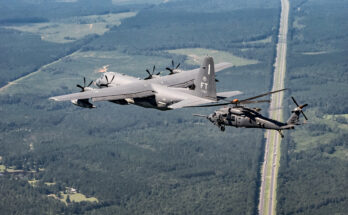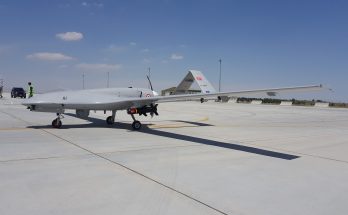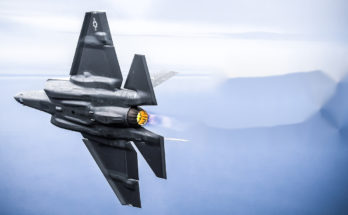India’s Cabinet Committee on Security, the top decision-making body on defense issues, has granted approval for the purchase of 70 indigenous HTT-40 basic trainer aircraft. The procurement will move ahead later this month, per a statement by Defense Minister Rajnath Singh.
The new trainers are meant to complement the Indian Air Force (IAF) fleet of Swiss-produced Pilatus PC-7 Mark II basic trainers, currently numbering around 75.
Cabinet okays buying 70 HTT-40 trainer aircraft from HAL for Rs 6,800 crore ($825 million).
HTT-40 currently has an indigenous content of 56% but HAL says it will increase to over 60% soon.https://t.co/8bYAMzhgxt
— Ajai Shukla (@ajaishukla) March 2, 2023
While the IAF initially wanted little to do with state-owned Hindustan Aeronautics Ltd (HAL) basic trainer platform, the government felt differently. Its push to promote a “Make in India” indigenous agenda contrasted with the IAF’s preference for backfilling its basic trainer capacity needs via an expanded order of Pilatus PC-7 Mk IIs.
The IAF continues to suffer a shortage of basic training aircraft for newly inducted pilots to train on and the back-and-forth between the senior IAF officials, HAL, and the government’s high-level Defense Acquisition Council (DAC) regarding a potential buy of HTT-40s delayed a solution.
To gap-fill its capacity shortage, the IAF floated a Request for Information (RFI) inviting domestic companies to build 106 PC-7 Mk IIs in partnership with Pilatus that would help move towards a larger IAF requirement for 181 basic trainers (the larger-scale requirement involves 388 units of both basic and advanced training variants).
At the time, this was viewed as an attempt to parry the government’s efforts to impose the HTT-40 upon the service, which the IAF claimed would be costlier than the Swiss alternative.
A minor compromise was reached in February 2015 when the DAC authorized the exercise of an option for the purchase of 38 additional PC-7s. In return, the DAC ordered the IAF to purchase the HTT-40 in significant numbers going forward.
However, after the Indian government opted in July 2019 to terminate business dealings with Pilatus for one year following allegations of illegal monetary kickbacks related to a 75-unit contract for procurement of PC-12 Mk II basic trainers, the IAF dropped its earlier plans to acquire the additional 38 units on option.
The Indian government then cleared a procurement of the HTT-40 in 2020. Following this, the IAF issued a Request for Proposals (RFP) to HAL for procurement of roughly 70 HTT-40s on February 4, 2021, at the Aero India 2021 exhibition. The RFP included a clause suggesting an option for another 38 HTT-40s.
The twists and turns involved in the HTT-40 procurement is typical of India’s uneven military procurement practices, particularly as the country attempts to grow its local defense industry and increase the indigenization content of the equipment in the Indian armed forces inventory.
HAL began exploring building the HTT-40 as a successor to its 1970s-legacy HPT-32 Depak trainer, grounded by the IAF in 2009 following a crash (one of 17 in total following the platforms induction into service in the early 1980s). The HPT-32s had become increasingly obsolete, with no ejection system featured on the aircraft and no recording equipment in the cockpit. The outdated instrumentation and avionics on the planes meant that they could not operate in inclement weather.
By June 2017, the HTT-40 had performed its maiden flight. The aircraft eventually proved to meet multiple IAF requirements: a top speed of 400 kmph (249 mph), a ceiling requirement of 20,000 feet, a takeoff and landing restriction of 1,000 meters of runway, and the passing of spin trials.
The 70-unit HTT-40 procurement is estimated at $388.5 million. Deliveries will unfold over a six-year period, with the first batch of two aircraft expected to arrive within 20 months of contract signing.
Once in service, the HTT-40s will be used for introductory training by both IAF and Indian Navy pilots, who then advance to the Kiran Mk II for second stage (intermediate) training, followed by the BAE Systems Hawk 132 for advanced (Stage 3) training. The aircraft will also be used for aerobatics, instrument flying, and close formation flights, with secondary roles including navigation and night flying, per a statement by HAL.
Dan Darling is Forecast International’s director of military and defense markets. In this role, Dan oversees a team of analysts tasked with covering everything from budgeting to weapons systems to defense electronics and military aerospace. Additionally, for over 17 years Dan has, at various times, authored the International Military Markets reports for Europe, Eurasia, the Middle East and the Asia-Pacific region.
Dan's work has been cited in Defense News, Real Clear Defense, Asian Military Review, Al Jazeera, and Financial Express, among others, and he has also contributed commentary to The Diplomat, The National Interest and World Politics Review. He has been quoted in Arabian Business, the Financial Times, Flight International, The New York Times, Bloomberg and National Defense Magazine.
In addition, Dan has made guest appearances on the online radio show Midrats and on The Media Line, as well as The Red Line Podcast, plus media appearances on France 24 and World Is One News (WION).




